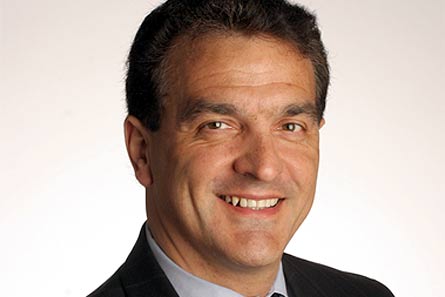Despite executive and industrial turmoil at the European giant, technology chief Jean Botti is focusing on fundamentals
With all the comings and goings among EADS senior executives this year, one top-level arrival went almost unnoticed. In April, Jean Botti became the aerospace giant's first chief technology officer, with a seat on the board and a remit to make sure the company's research and development euros are spent wisely.
His appointment was a departure for EADS, which since its creation in 2000 has wrestled with its industrial and business structure. "For six years we have had to integrate and there was perhaps a tendency to forget the fundamental base, which is technology," says Botti, a Frenchman of Italian parentage who spent 16 years working for car parts manufacturer Delphi in the USA. "We are the highest-technology company in Europe. That is why EADS wanted a chief technology officer, to make sure this aspect would be covered."
Botti has a wide-ranging role, spanning all EADS divisions, from arguing the case for R&D on the board - at a time when cost-cutting, particularly at Airbus, is high on the agenda - to ensuring the company is harnessing new sources of technological talent in emerging regions such as China, India and Russia. He is also charged with drawing up a "technology map" that will help decide EADS's spending priorities over the next 10 years.

One critical area is the development of lightweight materials. Although Airbus led the way in introducing composite structures to its aircraft in the 1980s, its rival, Boeing, has taken the biggest step commercially with its 787, almost half of the primary structure of which is made of composites. Airbus, of course, has since said that about 50% its A350 XWB airframe will be constructed from composite materials.
But Botti refutes the suggestion that Seattle is opening a gap in terms of know-how, and insists the amount of composite material in any future Airbus aircraft will be limited not by technology, but by customer demand. "You have to separate business decisions from technical competencies," he says. "EADS and Airbus are extremely strong in composites on everything from the A380, to helicopters, to space. Any decision to build an all-composite aircraft would be based on market appeal - a business decision on what an aircraft should look like."
Airbus, he says, is "contemplating an all-composite aircraft" and "will be looking at this very strongly in the near future". It has long been assumed that the successor to the A320 family will include a much higher proportion of composite materials, as airlines increasingly look to drive down operating costs and overcome any lingering suspicion of plastic aircraft. "We are not going to disclose what we are working on, but we are working on new technologies to make them cheaper and safer," he says.
"You can make big mistakes. You have to be careful not to be lured by low-cost engineering" |
|---|
One of his biggest responsibilities will be recommending where EADS establishes research outposts around the world and the technologies they should focus on. These decisions could reap big rewards in market share. "If you want to penetrate emerging markets, you have to start by placing R&T [research and technology] sites," he says, adding that the choice of a research centre is often more crucial than that of an assembly line. Getting it wrong can be costly. "It's a delicate exercise that needs balancing. At first you are trying to judge what kind of quality you will get there. You can make big mistakes. You have to be careful not to be lured by low-cost engineering."
Another decision laden with political overtones is how any workshare on future programmes will be split between Airbus's four national units in France, Germany, Spain and the UK. With governments ever keen to tilt the balance of jobs and investment towards their domestic industry, and the Spanish in particular having made great strides in composite expertise, there are fears among many in the UK that BAE Systems' exit from Airbus might impair Bristol and Broughton's ability to attract key work packages.
But Botti insists that any investment decisions will be made on the grounds of expertise rather than political expediency. "You might think that because of the strong influence of French and German industry, all composites would go to these countries," he says. "But the reality is that is just not true. In each case, we select on the basis of where the deep knowledge is in that area of manufacturing."
Despite the recent bad press surrounding EADS and Airbus, Botti maintains its core technological expertise is unrivalled in the industry. "There has been a lot of publicity, but we have to be cautious and remember that we are still a very successful technology company," he says. "I don't think there is any need for a revolution at EADS, but there is a need for evolution."
|
Source: Flight International























